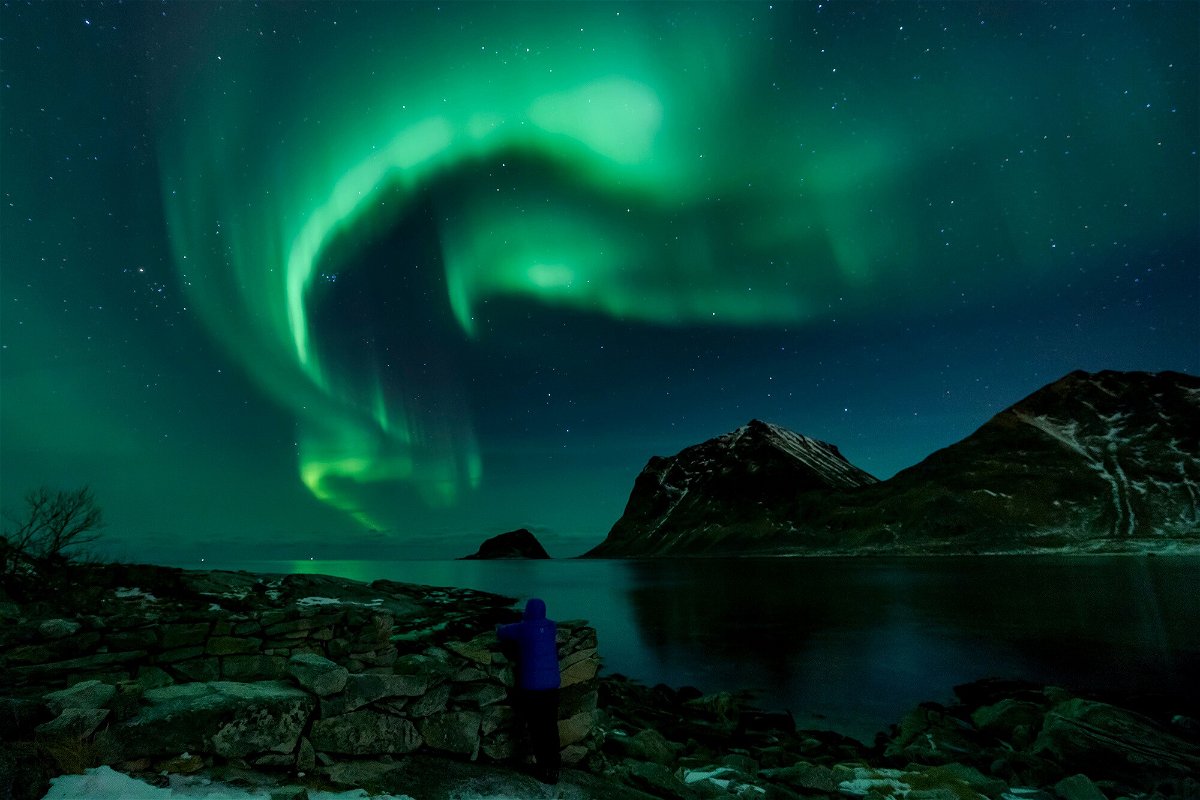Aurora borealis may be hidden over mainland US, but the northern lights could put on a show in other countries

A person watches Northern Lights on March 9
By Paul P. Murphy and Holly Yan, CNN
Many Americans trying to catch a glimpse of the northern lights this weekend were thwarted by clouds or rain, but other countries and Alaska could get a mesmerizing treat this Halloween night.
Parts of Canada, Alaska and Russia might see the finale of a weekend lights show Sunday that started when a large solar flare erupted Thursday and became visible to Earth starting Saturday, forecasters said.
The solar flare led to a strong geomagnetic storm that caused the aurora borealis, or northern lights, to reach parts of the US and Europe.
On Friday, the University of Alaska Fairbanks Geophysical Institute Aurora Forecast had predicted that, weather permitting, the northern lights might be visible this weekend from Portland, Oregon, to New York City.
But many parts of the northern US had foggy, rainy or overcast skies that hindered views of the aurora, CNN meteorologist Allison Chinchar said.
As of Sunday, most of the mainland US was not expected to see any more of the northern lights this weekend, CNN meteorologist Haley Brink said.
But “Aurora may be visible at high latitudes such as Canada and Alaska,” the National Oceanic and Atmospheric Administration’s Space Weather Prediction Center said Sunday. “Weak power grid fluctuations can occur.”
The northern lights — as well as the southern lights, which are seen in the Southern Hemisphere — are the result of electrons colliding with the upper reaches of Earth’s atmosphere, the NOAA said.
The electrons are energized through acceleration processes. The accelerated electrons follow the magnetic field of Earth down to the polar regions, where they collide with oxygen and nitrogen atoms and molecules in Earth’s upper atmosphere, the agency said.
In these collisions, the electrons transfer their energy to the atmosphere and excite the atoms and molecules to higher energy states. When they relax back down to lower energy states, they release their energy in the form of light.
The-CNN-Wire
™ & © 2021 Cable News Network, Inc., a WarnerMedia Company. All rights reserved.